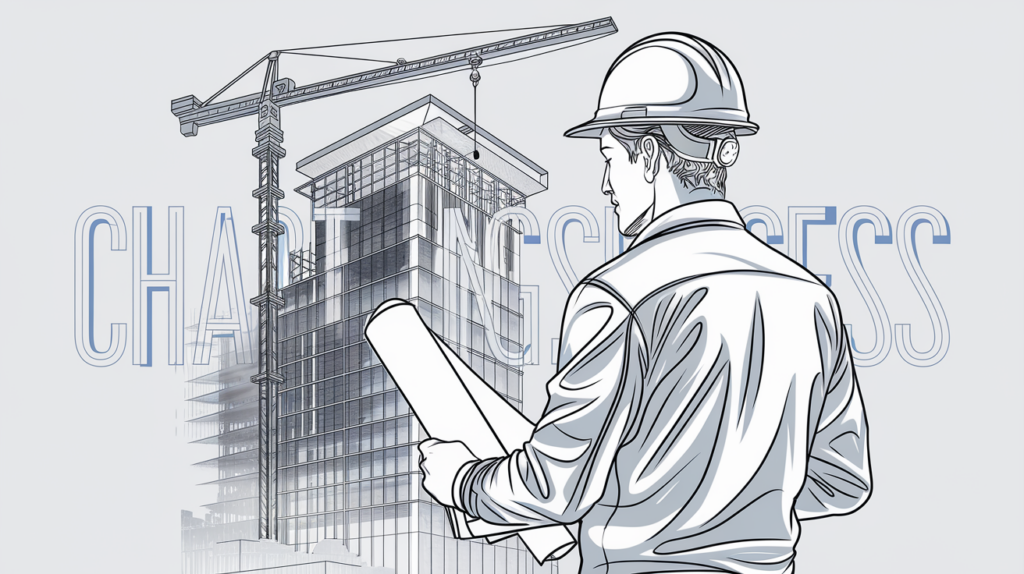Managing finances in the construction industry is a complex endeavor. A well-structured Chart of Accounts (COA) is essential for tracking income and expenses, ensuring accurate financial reporting, and gaining valuable insights into your business’s performance. In this comprehensive guide, we’ll walk you through creating a COA tailored specifically for construction companies in 2024.
What is a Chart of Accounts?
A Chart of Accounts (COA) is a structured list of all the financial accounts used in your company’s general ledger. It organizes financial transactions into categories and subcategories, reflecting the structure of your financial statements—such as the balance sheet and income statement. A well-organized COA allows you to analyze income, expenses, assets, and liabilities, providing insights into your company’s financial health.
Why is a COA Essential for Construction?
In the construction industry, financial management has unique challenges due to project-based operations, varying costs, and complex revenue recognition. A well-designed COA is crucial for several reasons:
- Clear Financial Picture: Track every transaction to provide a comprehensive view of your company’s financial status.
- Informed Decision-Making: Analyze detailed financial data to make strategic business decisions.
- Improved Accuracy: Minimize errors and ensure consistent financial reporting aligned with industry standards.
- Simplified Reporting: Easily generate financial statements, tax reports, and compliance documents.
- Better Cost Control: Track project costs meticulously to identify areas for improvement and increase profitability.
How a COA Works in Construction
Construction companies use a COA to categorize financial transactions, which are then recorded using a double-entry accounting system. These transactions are summarized in financial statements, providing insights into your company’s performance.
The specific accounts within a COA will vary depending on the type of construction work you perform—whether you’re a general contractor, subcontractor, or material supplier—and how you recognize income. While each company’s COA is tailored to its specific needs, it must comply with Generally Accepted Accounting Principles (GAAP). Consistency in the COA structure from year to year is essential for accurate financial comparisons over time.
Creating Your Construction COA
Creating a COA involves several key steps:
- Identify Your Business Activities: Determine the nature of your construction business—are you a general contractor, subcontractor, or supplier? This will influence the accounts you need.
- Choose Your Income Recognition Method: Decide how you will recognize revenue (e.g., completed contract method or percentage of completion method).
- Define Account Categories: Establish the main account categories: Assets, Liabilities, Equity, Income, Cost of Goods Sold (COGS), and Expenses.
- Create Subaccounts: Develop subaccounts under each main category to provide detailed tracking (e.g., under Assets: Cash, Accounts Receivable, Equipment).
- Number Your Accounts: Assign account numbers for easy reference and organization. A common numbering system is:
- 1000–1999: Assets
- 2000–2999: Liabilities
- 3000–3999: Equity
- 4000–4999: Income
- 5000–5999: Cost of Goods Sold
- 6000–6999: Expenses
- Integrate Job Costing: Set up accounts that allow you to track costs by job or project for accurate profitability analysis.
- Consult Accounting Standards: Ensure your COA complies with GAAP and any industry-specific regulations.
- Review and Adjust: Periodically review your COA to make adjustments as your business evolves.
Recognizing Income
Choosing the right method for income recognition is crucial for accurate financial reporting. In construction, two primary methods are used:
- Completed Contract Method: Revenue and expenses are recognized only when the project is fully completed. This method is suitable for short-term contracts or when project outcomes are uncertain.
- Percentage of Completion Method: Revenue and expenses are recognized progressively based on the percentage of work completed. This method provides a more accurate reflection of financial performance for long-term projects.
Example: If you have a two-year project worth $1 million and you’ve completed 50% of the work by the end of the first year, under the percentage of completion method, you would recognize $500,000 in revenue for that year.
The choice of method depends on the nature of your projects and your company’s accounting policies. Consult with an accounting professional to determine the best approach for your business.
Tracking Indirect Expenses
Indirect expenses, or overhead costs, are not directly tied to specific projects but are necessary for overall operations. Examples include:
- Office rent and utilities
- Administrative salaries
- Insurance premiums
- Marketing and advertising expenses
- Office supplies
Tracking these expenses accurately is vital for understanding your true cost of doing business. You can categorize these costs as:
- Administrative Expenses: General overhead costs not directly linked to project execution.
- Indirect Job Costs: Overhead costs that can be allocated to projects based on a reasonable method (e.g., labor hours).
Tip: Consider using allocation methods to distribute indirect costs to specific projects, providing a more accurate picture of project profitability.
Detailed Account Categories
Below is an expanded view of account categories tailored for a construction company:
| Category | Account Number Range | Subcategories/Examples |
|---|---|---|
| Assets | 1000–1999 |
|
| Liabilities | 2000–2999 |
|
| Equity | 3000–3999 |
|
| Income | 4000–4999 |
|
| Cost of Goods Sold (COGS) | 5000–5999 |
|
| Expenses | 6000–6999 |
|
Best Practices
To create and maintain an effective COA, consider the following best practices:
- Consistency: Maintain the same COA structure from year to year to enable accurate financial comparisons and trend analysis.
- Clarity: Use clear and descriptive account names to ensure that anyone reviewing your financials understands each account’s purpose.
- Detail: Use subaccounts to provide detailed tracking within major categories, which is particularly useful for job costing.
- Regular Review: Review and update your COA periodically—at least annually or when significant business changes occur.
- Software Integration: Choose accounting software that aligns with your COA structure and supports the construction industry’s unique requirements.
- Compliance: Ensure your COA complies with GAAP and any relevant tax laws or industry regulations.
Integrating Job Costing with Your COA
Job costing is a crucial aspect of construction accounting, allowing you to track all costs associated with individual projects. To integrate job costing with your COA:
- Set Up Job Codes: Assign unique codes or numbers to each project.
- Use Subaccounts: Create subaccounts under COGS and Expenses for each job code.
- Allocate Indirect Costs: Develop a method for allocating indirect expenses to projects (e.g., based on labor hours or machine hours).
- Utilize Software Tools: Implement accounting software with robust job costing features to automate tracking and reporting.
- Regular Monitoring: Review job cost reports frequently to identify variances and adjust project management strategies accordingly.
By accurately capturing all job-related costs, you can determine the true profitability of each project and make informed decisions to improve future performance.
Frequently Asked Questions
- How often should I review my COA?
- It’s advisable to review your COA at least annually or whenever significant changes occur in your business operations, such as expanding services or entering new markets.
- What accounting software is recommended for construction companies?
- Popular choices include QuickBooks Contractor Edition, Sage 100 Contractor, and specialized construction accounting software like Procore and CMiC. Choose software that offers strong job costing, COA customization, and integration capabilities.
- Can I customize my COA?
- Yes, you should customize your COA to fit your specific business needs while ensuring compliance with GAAP and industry regulations. Customization allows you to track financial information that’s most relevant to your operations.
- How does the COA affect financial analysis and decision-making?
- A well-structured COA provides detailed financial data, enabling accurate analysis of profitability, cash flow, and cost management. This information is critical for strategic planning and informed decision-making.
- What are common mistakes to avoid when creating a COA?
- Common mistakes include overcomplicating the COA with too many accounts, using unclear account names, not aligning with accounting standards, and failing to integrate job costing. Avoid these pitfalls by following best practices and consulting with accounting professionals.
- How can I adjust my COA as my company grows?
- As your company expands, periodically review your COA to add new accounts or subaccounts that reflect new services, projects, or organizational changes. Ensure that any adjustments maintain consistency and compliance.
XOA TAX – Your Partner in Construction Accounting
Developing and maintaining a comprehensive COA can be time-consuming and complex. XOA TAX specializes in construction accounting and can help you:
- Create a customized COA tailored to your business needs
- Implement best practices for financial management
- Integrate job costing and accounting software solutions
- Ensure compliance with GAAP and tax regulations
- Improve financial reporting and analysis
Our team of experts understands the unique challenges of the construction industry. Contact us today for a free consultation and take the first step toward optimizing your financial management.




 anywhere
anywhere  anytime
anytime